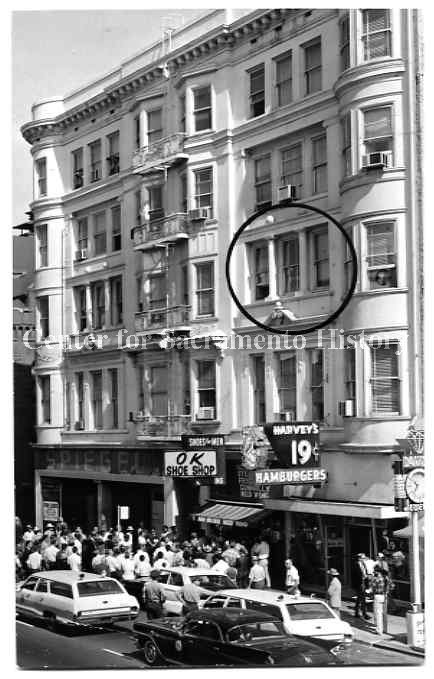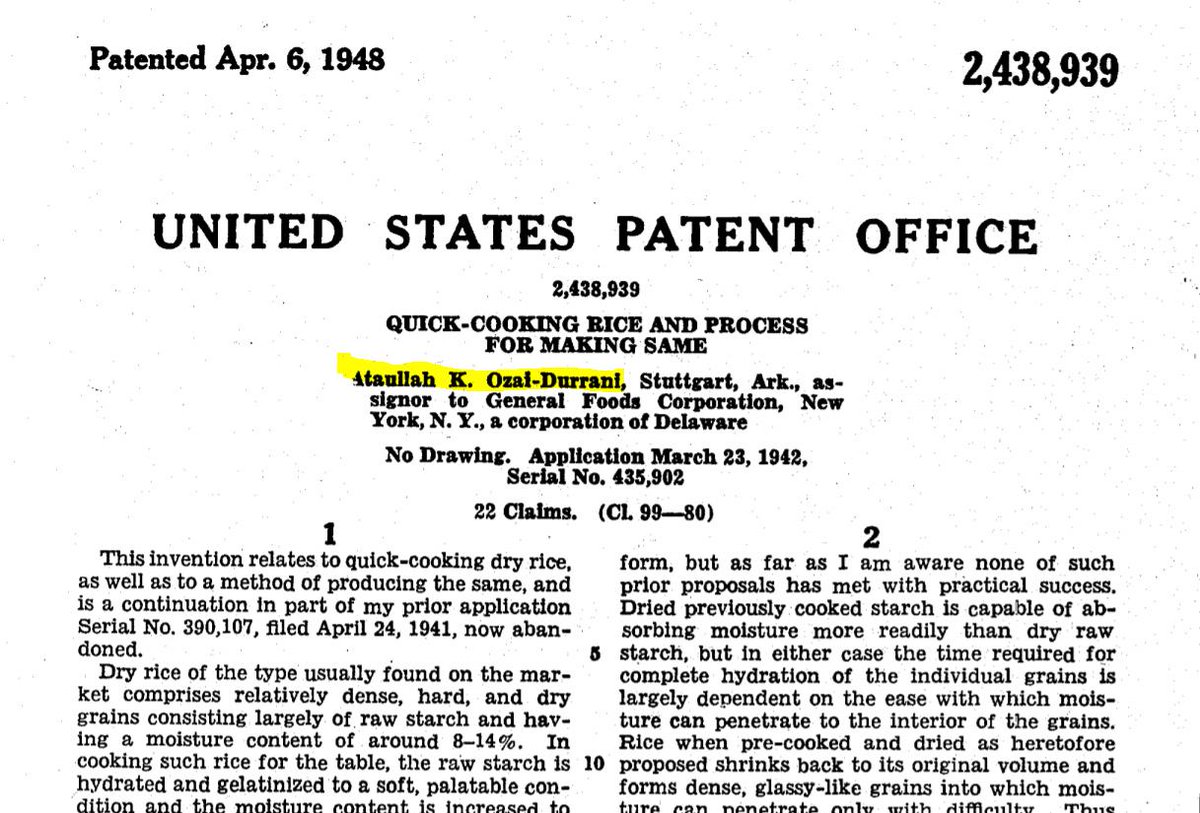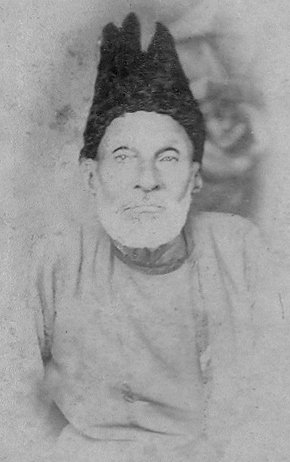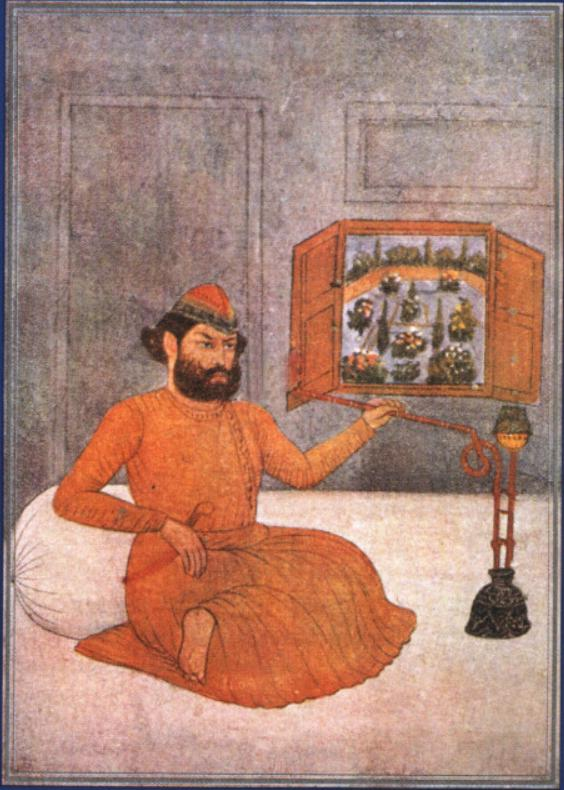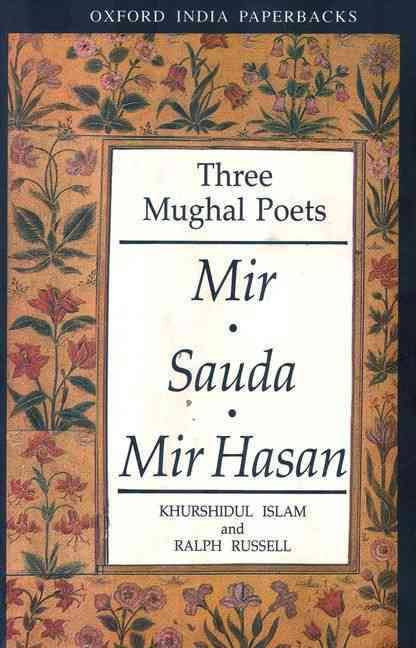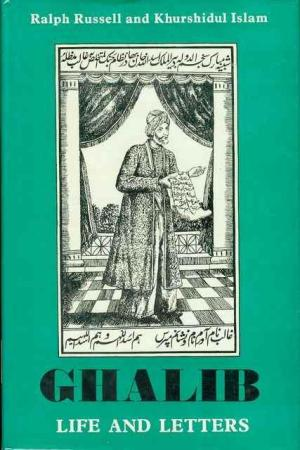GOVERNMENT OF PAKISTAN
THE FRONTIER CORPS (NWFP) PAKISTAN AND ITS HEADQUARTERS
General Background
1. It is an historical fact that the tribes living in mountainous area West of River Indus had preserved their independence against the forces of many invading forces/rulers. When the Sikh Empire collapsed and Punjab was annexed by British on 29 Jan 1849, the areas comprising the present North West Frontier Province, also came under their way. It was a difficult task to subjugate the tribes even by the active help/Support of the British. However, within another fifty years, many expeditions were sent against them and some sort of hold was established. The misadventure in Afghanistan by the British in the Second Afghan War of 1878-80 led to the demarcation of the Durand Line. According to the agreement signed in November 1893, the Afghan government renounced “all claims to suzerainty over the Frontier tribes from Chitral to Persian Border residing on the Indian side of the demarcated Durand Line”.
2. The demarcation of Durand Line increased the responsibilities of the British. By that time, they had already established Khyber Agency in 1878, Kurram Agency in 1892 and the Malakand, North and South Waziristan Agencies were established in 1895-96. These administrative agencies in the area had their own units of Militia and Scouts, namely, the Khyber Rifles (1878), Zhob Militia (1883) the Kurram Militia (1892), Tochi Scouts (1894), Chagai Militia (1896). South Waziristan Scouts (1900) and Chitral Scouts (1903). Various Frontier Corps Force (PIFFERS) units of the Frontier Army force also remained stationed at Dera Ghazi Khan, Dera Ismail Khan, Bannu, Kohat, Mardan etc in support of the Scouts.
The Creation of the Frontier Corps Headquarters
3. The arrival in India of Lord Curzon as Viceroy and Governor General in 1899 brought at a change in the policy about the border tribes. He entrusted the job of the PIFFERS to the Scouts and Militia Units. According to a unique tradition, the PIFFER Units and Scouts, used to accept LRC (Last Ration Certificate) of each others personnel despite different accounting systems. These units had been raised in different areas and organised according to local requirements. With the new role, an organisation for coordination was felt necessary. As such a separate Headquarters was created in 1907. The new organisation that was called the Frontier Corps initially comprised the above-mentioned seven units. An inspecting officer with the rank of Lieutenant Colonel/Colonel was appointed as head of the Frontier Corps. His job was to coordinate the activities of the Militia and Scouts and also to re-organise these units in the light of new responsibilities. The offices of the Inspecting officers and IGFC’s used to be in a building near the present Provincial Assembly Hall. These were later shifted to Bala Hisar Fort in 1949. The first Inspecting Officer was Colonel W.C Barrett, DSO.
Expansion of The Frontier Corps
4. In 1943, the designation of Inspecting Officer Frontier Corps, was changed to the Inspector General and Secretary, Frontier Corps (NWFP), with the rank of a Brigadier whose jurisdiction stretched from Skardu in Northern Area to NWFP, Baluchistan and down to sea coast of Mekran. By then, the First Mahsud Scouts, raised in 1937, had also been included in the Frontier Corps. In later years, the Second Mahsud Scouts (1944), the Pishin Scouts (1946), the Thall Scouts (1948), the Northern Scouts (1949), the Bajaur Scouts (1961), the Karakoram Scouts (1964), the Kalat Scouts (1965) and Dir Scouts (1970) were also added. The Kohistan Scouts, were raised on 31st December 1977 at Fort Milward by Major Abdul Qadir Khan but disbanded in 1981. When as a result of one-unit, the province of West Pakistan, was created in 1955, the word “Secretary” was dropped.
Bifurcation into FC (NWFP) and FC (Baluchistan)
5. By 1947 the Frontier Corps had further increased in strength and had become a very big force looking after the area from the Karakoram in the North to the Mekran Coast in the South. The area of responsibility was well over 2500 miles in length. It was, therefore, decided to bifurcate the Frontier Corps. The units stationed in Northern Areas Skardu/Gilgit directly came under the Army, and Baluchistan province came under Frontier Corps (Baluchistan) with Headquarters at Quetta and headed by its IGFC. These units included Zhob Militia, Sibi Scouts, Kalat Scouts, Mekran Militia, Kharan Rifles, Pishin Scouts, Chaghai Militia and First Mahsud Scouts which were re-named as Maiwand Rifles, Ghazaband Scouts, Bhambore Rifles, Kharan Rifles and Loralai Scouts were also raised later on. Mekran Militia which had ceased to exist in early sixties was also re-raised. The units serving in the North West Frontier Province came under Frontier Corps (NWFP) with Headquarters at Peshawar. Second Mahsud Scouts became Mahsud Scouts. Mohmand Rifles and Shawal Rifles were raised later on. The following Pakistani IGFC’s have commanded so far: -
Brig Ahmad Jan, M,B.E 1950-51
Brig K.A Rahim Khan 1951-53
Brig Bakhtiar Rana, M,C, 1953-55
Brig Sadiq Ullah Khan, M.C 1955-58
Brig Rahman GuI, S.Q.A, S,K, MC 1958-63
Brig Sadiq Ullah Khan, MC 1963-64
Brig Bahadur Sher, MC 1964-66
Brig Mahboob Khan, TQA 1966-69
Brig Mahmud Jan, SQA 1969-71
Maj. Gen. Sherin Dil Khan Niazi 1971-72
Brig Iftikhar-I-Bashir 1972
Brig Nasir Ullah Khan Babar, SJ&Bar 1972-74
S.Bt
Brig Ghulam Rabbani Khan, HI (M), S.Bt 1974-78
Maj. Gen. Agha Zulfiqar Ali Khan, HI(M) 1978-81
Maj. Gen. Mian Muhammad Afzaal, HI(M), 1982-84
S.Bt
Maj. Gen. M, Arif Bangash, S.Bt 1984-86
Maj. Gen. Mohammad Shafiq, HI(M), S.Bt 1986-88
Maj. Gen. Ghazi ud Din Rana, S.Bt 1988-90
Maj. Gen. Humayun Khan Bangash, T.Bt 1990-91
Maj. Gen. Muhammad Naeem Akbar Khan 1991-92
Maj. Gen. Mumtaz GuI, T.Bt 1992-94
Maj. Gen. Fazal Ghafoor, S.Bt 1994-97
Maj. Gen. Sultan Habib, HI(M) 1997 to date
6. It is worth mentioning that Brigadier Sadiq Ullah Khan, MC had the distinction of serving twice, as IGFC from 1955 to 1958 and 1963 to 1964. Similarly Brigadier (Now Lt. Gen. Retd) Bakhtiar Rana (1953-55) and Major General Ghazi ud Rana (1988-90) were the only father and son to have remained IGFC’s of the Frontier Corps.
THE MAJESTIC BALAHISAR FORT
7. Bala Hisar is one of the most historic places of Peshawar. The words are Persian, meaning, “elevated or high fort”. According to Dr. Hussain Khan, the name was given by the Afghan King Taimur Shah Durrani (1773-1793). The Sikhs named it Samir Garh in 1834 but the name did not become popular. The fort stands on a high mound in the northwestern corner of Peshawar City. No long ago the fort used to be conspicuously away from the old city of Peshawar but now the construction of new buildings has covered space between the old city and the fort. However the fort being high, gives a commanding and panoramic view of Peshawar and the entire Peshawar valley. On a clear day, one can see the mountains encircling Peshawar valley and beyond. The area covered by the inner wall of the fort is about 10 acres and the outer wall is about 15 acres. The height of the fort is about 90 feet above ground level.
THE ORIGIN AND EARLY HISTORY OF BALAHISAR
8. It is surprising to note that no one is clear about the origin of the fort and many believe that the fort was built by the Mughals. This wrong concept about the origin of this fort has adopted because of the fact that only the Mughals maintained diaries and mentioned about it. Babar, who was very meticulous, never said that he built Bala Hisar. In actual fact the fort is as old as the city itself. It will be seen that the main entrance of the fort directly faces the ancient Route to India [Peshawar Charsadda (Pushkalavati) route]. The same route is further extended to the historic city of Shahbaz Garhi (Po-lo-Sha or Varshapura) and onwards to Hund (Udabhandpura). This shows that fort must be at least about 2000 to 2500 years old and must have been the residence of the city chief of those days.
9. Renowned historian Dr. AH.H. Dani in his book “Peshawar— Historic City of Frontier”, writes that when Hiuen Tsang visited Peshawar (630 AD), he speaks of a ‘royal residence’. He says that Chinese word ‘Kung Shing’ use for it is significant and is explained as fortified or walled portion of the town in which the royal palace stood. Hiuen Tsang then makes a separate mention of the city which was not fortified. This shows that the royal residence formed the nucleus of a Citadal, which must have been further protected by a moat. Dr. Dani further says that channel of old Bara river surrounded a high spot which includes the Bala Hisar and Andar Shahr. The higher area could have been Citadel which is the present Bala Hisar.
FORT UNDER THE GHAZNAVIDS
10. Peshawar has always remained a strategic city and its capture was of great importance for the invaders. When Subuktagin captured Peshawar in 988 AD he garrisoned 10,000 horses there. Due to the concept of having a citadel dominating the city nearby, it is easy to infer that Subuktagin’s garrison must have been in the Bala Hisar Fort, by whichever name it existed then. Mahmud of Ghazni had defeated Hindu Rajas Jaipal and Anandpal in 100 AD and 1006 AD respectively near Peshawar. The Raja’s forces must have sought strength and protection from the citadel of Peshawar, which was also protected by the surrounding channel of Bara River. Seeing the importance of the city, Mohammad Ghori also took Peshawar in 1179 AD.
THE FORT UNDER THE MUGHALS
BABAR VISITS BAGRAM
The great founder Mughal Emperor, Zahir ud Din Babar has frequently mentioned about the fort of Bala Hisar in his memories. He talks of this dismounting near Bigrarn (or Begrarn, old Peshawar) and then going out for hunting. He had also visited the great ‘tree’ the Pipal Mandi area, which Hiuen Tsang had seen, having four sitting figures of Budha under-neath. Babar left the fort in the charge of Shah Mir Hussain before his onward march into India.
THE FORT AND EMPEROR HUMAYUN
11. When Mughal Emperor Humayun was overthrown by the great Afghan King Sher Shah Suri, the Afghan destroyed Fort Bala Hisar also. While going to Kabul, Humayun however stayed at Peshawar and rebuilt Bala Hisar. Record of this event by Abul Fazal is quoted by Major Naimat in his article on Bala Hisar.
“After the overthrow of Emperor Humayun, by Sher Shah Suri, Afghans destroyed the fort of Begrarn (Peshawar). When Humayun was staying in the fort, he decided to rebuild it and garrison it and then proceed to Kabul. He wanted to use the fort for his conquest of India at a later stage. After returning from Persia he made use of the fort”.
THE GLORIOUS PERIOD OF THE DURRANIS
DURRANI ROYAL RESIDENCE
12. Ahmad Shah Durrani captured the fort from Mughals and made it a residential palace.
13. Taimur Shah Durrani, the son of Ahmad Shah Durrani had made Peshawar, his winter capital. While at Peshawar, his royal residence used to be in Bala Hisar Fort. However no building/structure of his days exists in the present fort. Taimur Shah kept a bodyguard of “Gholami Shahis” consisting of Persians and Tajiks for protection. In 1779, when a Khalil Chief Faizullah Khan forced his entry into Bala Hisar, the King was saved by the same bodyguards.
BALA HISAR UNDER THE SIKHS
14. After the death of Taimur Shah Durrani in 1793, AD Shah Zaman became the King. However the Durrani rule weakened and the Sikhs rose to power in the Punjab. After the battle of Nowshehra, the Sikhs captured Peshawar including Bala Hisar in 1834. At the time the fort was in a bad shape. Some accounts however indicate that the Sikhs first destroyed Bala Hisar but later realized its importance for protection and had to rebuild it. Either Hari Singh Nalwa or Sardar Khurruck Singh are said to have rebuilt the fort. However according to Raverty, Sher Singh, on the orders of his father Ranjeet Singh, erected the fort with unburnt bricks. Sardar Tej Singh and General Evitable (1838-42) also stayed in Bala Hisar as Governors. While entering the main courtyard of the fort, a Sikh period inscription in marble can be seen on an arch gate. This is the only mark/inscription available today in Bala Hisar.
BALA HISAR UNDER THE BRITISH
1 5. After the downfall of the Sikhs, Punjab was annexed by the British in 1849 and naturally Peshawar valley also became part of British India. At that time Bala Hisar had mud walls and was not very strong. The British replaced the whole structure with bricks and the present shape was given to Bala Hisar. Almost all the barracks that exist today were made by the British.
16. The British used to keep the troops in Bala Hisar till the cantonment was laid out. When the Afridi tribesmen launched an attack on the city in 1930, they fired guns from Balahisar Fort to stop Tribes men from entering the city.
MUSEUM
17. A small museum has also been opened inside the fort which displays the weapons, dresses and other historical photographs etc related to the Frontier Corps.
KHYBER RIFLES
18. The Khyber Rifles is one of the oldest historic units of Militia of Frontier Corps NWFP. Khyber Rifles originally known as Khyber Jezailchis, were raised in Nov. 1878 by Captain Gais Ford. It was a sort of semi Khassadars Force carrying their own rifle (Jezail). This force was to prevent the tribes molesting the line of control of the Second Afghan War expeditionary force (1878). Captain Gais Ford commanded Khyber Rifles upto 1881 when he handed over command to Sardar Mohammad Aslam Khan (First Muslim Commandant). Sardar Mohammad Aslam Khan, who later became Lt. Col. Nawab Sir Mohammad Aslam Khan, commanded the Corps from 1881 to 1897. He has seen the longest period of command i.e. 16 years. Upto 1887 the Khyber Jezailchis served only in Khyber Agency. In that year they were redesignated as the Khyber Rifles and their role changed from serving within the Khyber Agency to serving anywhere required. This major change in the conditions of their service enabled the personnel of the Khyber Rifles to distinguish themselves in various expeditions and operations in which the troops took part.
19. In the troublesome period of World War II, the British Government appreciating the fighting qualities of the Frontier tribes, realised that they could not achieve their aims without the support of important tribes whose recruitment had been stopped in 1921 due to their hostile actions. As a consequence, in addition to some other tribal battalions, the first Afridi Battalion was raised in 1942. This Battalion, served in Iraq, Iran and Syria upto 1946. In appreciation for the helpful response in successfully raising the first Afridi Battalion and gallant actions of the Battalion during the War, it was decided to re-raise the Khyber Rifles.
THE HISTORIC KHYBER PASS
20. Khyber Pass is one of the most important and famous passes in the World, located in the Khyber Agency.
21. This pass, connects Central Asia with the South Asian Sub Continent. This, 42 kilometers long pass starts from the foot of the hills near Jamrud and ends at Torkham on the Pakistan-Afghanistan border. Being the shortest route to the South Asian Sub Continent, most of the races and invading armies marched through this pass. When the British invaded Afghanistan, they sent their forces along the same pass.
22. Khyber is a Hebrew name of a fort. It was in the battle of Khyber near Madinia Munawwarah, where Hazrat Ali (RA) showed great chivalry and that is why, Khyber was founded in the present Khyber Pass by the Pathans, on settlement in 8th century A.D. Similarly, Ali Masjid was founded in the memory of Hazrat Ali (RA).
23. Khyber Pass has very rich history, Buddhism spread through this pass to Afghanistan and the stupas at Ali Masjid and Sphola bear witness to it. Many a battles were fought here by the Afghans against the invading armies. Amir Taimur built a prison in the pass, which is visible from Michi Post. Akbar the Great built a fortress at Kafirkot, near Charbagh. The Mughal Army of Aurangzeb was massacred near Landikotal in 1672 AD. The Sikhs built a strong fort at Jamrud where General Hari Singh Nalwa was killed in 1837.
24. The British, however, not only built many of the present forts and picquets but also constructed the world famous Khyber Railway which was opened in 1925. It has 34 tunnels and 92 culverts. A famous battle between the British and the Afghans was fought at Ali Masjid in 1878. The famous Khyber Rifles of the Frontier Corps, today act as the “Guardians of the Khyber Pass, with there headquarters and beautiful mess at Landikotal”.
KURRAM MILITIA
HISTORICAL BACKGROUND
25. The conquest of Punjab was completed by the British in 1849, but with in the British also acquired the perpetual and insolvable problem of North West Frontier. The high mountains of the area were an effective barrier against invasion, provided the passes were held. The rugged and mountainous nature of terrain made the administration of the area is very difficult, and the freedom loving characteristics of the tribal people of the area made government by foreigners almost impossible. By tradition, in some cases, they were predators through economic necessity and as fanatics they fiercely resisted only rule by the Sikhs or Christians. It was also difficult to make them hold to any agreement, because they would not acknowledge a master. After the annexation of Punjab, the British found the tribesmen on obstacle to the effective management of the vulnerable border with Afghanistan and ultimately Russian. Initially the British followed the “Closed Door Policy”, but by the end of the nineteenth century they switched to “Forward Policy” i.e. of occupying and administering the country right upto the “Durand Line”, the international boundary agreed upon and demarcated with Afghanistan in 1893. This policy was adopted once the British failed to conquer and subjugate the Pathans. To this end a new province by the name of North West Frontier was created to help in the administration of the area. They also found a novel way of solving the problem, and that was to recruit the locals in the Frontier Brigade of the Indian Army. Later on the British raised the Frontier Scouts and assigned the responsibility of security of the region.
RAISING OF THE KURRAM MILITIA
26. Traditionally Afghanistan claimed suzerainty over the Kurram Valley, but apart from an occasional revenue extorting expeditions, they were unable to enforce their writ until the mid nineteenth century, when they occupied the valley with a military force and established their own Afghan Governor. They were finally driven out in the Second Afghan War 1878-80.
27. The Turis tribe in Kurram Agency, except for their initial troubles in the year 1850-55, always enjoyed cordial relations with the British. They had helped them against Kabul Khel Wazirs in 1859 and against the Zaimukht Tribe in 1879. It was neither the policy of the British government to annex the Kurram Valley nor did they want to get physically involved in the area. However, what the British wanted was to inculcate a spirit of self-reliance, self-protection and self-governance by the Turis themselves. However when the Turis took over the country, due to intense hatred between various factions of the area, complete anarchy resulted, Kurram was occupied by Chikai, the famous Zaimukht leader, and the Turis of Upper Kurram had great difficulty in repulsing the attacks of their Sunni neighbours. Finally as the various tribes of the area would not combine amongst themselves, they came, at their own request under the protection of the British government in the year 1892. In September of that year regular Army troops arrived in the valley and Mr. Merk, I.C.S was appointed as its first British Governor. However, it was soon realised that maintaining regular Army to guard such a far-flung Frontier, bordering on hostile and troublesome tribes was a very expensive affair. A new policy was therefore chalked out. The Turis themselves were to be made custodians of the Frontier. The regular Army was to be replaced by the local Turis Militia, as a well trained and lightly equipped infantry force, fully acquainted with local conditions and amply conversant with the country side. The formation of Turis Militia was initiated under Captain C.M. Dallas on 18 Oct. 1892, with a view to avoid the serious commitment of regular Army units for the protection of borders as well as to provide protection to Turis Shia Community in the valley. The raising of Turi Militia was later on completed by Captain E.W.S.K Maconchey of the 4th Punjab Infantry. The headquarters of the Militia was originally located at Balish Khel about 30 kilometers east of Parachinar but was soon shifted to Parachinar itself. Initially in 1899 an experiment was made of dividing the Militia into two separate battalions under separate commandants. The first battalion with a strength of 957 was to be mobile force for defence against foreign aggression, while the second was for garrisoning the valley. However, when this arrangement proved impracticable, the two battalions were amalgamated under one commandant in 1902. About this time the Turi Militia was renamed as Kurram Militia.
TOCHI SCOUTS
General
28. When, in 1849 British completed their conquest of the Sikhs, they acquired not only the Punjab, but also its problems, most notably the ungovernable North-West Frontier. The Frontier tribesmen, the Pathans, though loyal to their family and friends, were well known for their savagery in battle and their fierce independence. Their rebelliousness was the obstacle to the effective management of the vulnerable border with Afghanistan and ultimately, Czarist Russia.
29. ,The British solution to the problem was ingenious. They could not conquer the Pathans, so they recruited them instead. The tribesmen offered the benefits of joining the government service, became the Frontier Scouts, responsible for the security of the region. “The poachers became same keepers” as the Charles Chenevix Trench says in his book The Frontier Scouts”. The Tochi Scouts were also the ultimate result of the same background in North Waziristan Agency.
History and Raising
30. Upto 1904 regular troops occupied the out-posts in Tochi valley with a view to replace the regular troops, the North Waziristan Militia was raised on 1st June 1900 at Idak by Captain A. Fergusson Davie of 53 Sikhs (FF-Now 5 FF). At the time of raising the North Waziristan Militia consisted of 50 Mounted foot infantry and 800 Infantry. In 1901 the strength was increased to 70 Mounted Infantry and 1000 Infantry. The Headquarters of the Corps was transferred to Miranshah in October 1904. In October 1912 the strength of the Corps was increased to 150 Mounted. Croixde Guerre Darim Khan lived to become one of Frontier’s most famous characters.
The Faqir of Ipi (RA)
31. The name of Faqir of Ipi was Mirza Ali Khan. His followers used to call him ‘Haji Sahib’. Ipi is a village, from where Faqir of Ipi started Jehad against British government. Village lpi is located near Mirali Camp in North Waziristan Agency. He was born in 1897 in Shankai Kairta, which is located near Khajuri Post in North Waziristan Agency. He belonged to Haibati Madi Kheil, which is one of the sub tribes of Tori Khel Wazirs. His father was a religious man, named Arsala Khan. Faqir of Ipi was basically peaceful, religious preacher. He performed his first Hajj in 1928. He got married with the daughter of Qazi Hayat Ud Din, famous by the name of “Sheerzad”. He migrated from Bannu to Afghanistan during Khilafat movement. On arrival from Afghanistan back to his village, he adopted complete religious life. Being religious minded, he became popular among the Wazirs and all other tribes in the surroundings. He neither joined any political party, nor participated in any kind of political movement. Physically, he was slim with short height. He spent maximum time in the caves, busy in his prayers. In old age he became the patient of asthma.
32. Faqir of Ipi died at night on April 16, 1960. During his last days, he became so sick that it was not possible for him to walk for a few steps. People from far away used to come to him. His Namaz-I-Janaza was held at Gurwaikht led by Maulavi Pir Rehman. Thousands of people from different places came for his Namaz-I-Janaza. He was buried at Gurwaikht. In September 1922, the strength was decreased to 100 Mounted Infantry and 887 infantry and was given the name Tochi Scouts. Later on further increases/decreases in strength have been made in the establishment of this Corps in accordance with the exigencies of service.
33. Eversince the raising of this Corps is has remained on active service: always on its toes. Its long bloody and chequered history is the history of North Waziristan Agericy. It requires piles of books to be written if one has to do justice to the glorious services. It has rendered in North Waziristan Agency in particular and to the Frontier Corps in general.
Award of Victoria Cross
34. On 7 January 1915 Captain Eustace Jotham of North Waziristan Militia and 12 Mounted Infantry rode out of Miranshah to locate raiders from Khost, in Afghanistan. Captain Jotham was a romantic officer, who while on leave, won newspaper fame by rescuing passengers from a blazing railway carriage and now he was furious at being stuck in mud-hut in Waziristan. At Spina Khaisora, fifteen miles west of Miranshah, he along with his small patrol were ambushed in a deep nullah and almost surrounded by some 1500 tribesmen. Jotham and his men galloped for safety, but just as he was getting clear, the horse of one of his sawers was shot down. He turned back to rescue him using sword, and killed many tribesmen before he was shot dead riddled with the bullets and bleeding with dozens of slashes. Almost at the same time his daffadar a Wazir named Darim Khan dismounted to give covering fire to the remainder of the patrol and remounted and got away safely. Jotham was awarded a posthumous Victoria Cross. Darim Khan received the Indian Order of Merit.
SOUTH WAZIRISTAN SCOUTS
35. In 1878 an irregular Corps had been raised from local tribesmen i.e. Afridi in Khyber to protect traffic moving through the Khyber Pass, picquetting the hills on either side, protecting the route between the Afghan Frontier and Jamrud at the Eastern end of the pass. The Khyber Rifles (old Khyber Jezailchis) through practical experience, were reckoned on all accounts, to be a success, and if Afridis could be made into a useful local militia, surely this could be done elsewhere too.
36. To the Britishers the core of the Frontier problem was Waziristan and in particular its two largest tribes the Mahsuds of South Waziristan and Wazirs of the North Waziristan. The Political Agent of North Waziristan from his Headquarters in Bannu and the Political Agent of South Waziristan from the Headquarters in Tank, employed local levies who were quite useless but retained on the pay with the hope that they could thereby be kept out of mischief.
37. Wazirs and Mahsuds are related but were seldom on good terms. Both tribes were very difficult to handle. It was against this background that the North Waziristan Militia and South Waziristan Militia were formed in 1900. Each Corps consisted initially of 850 men, soon increased to 1850, half trans-Frontier, half cis-Frontier divided into two wings of approximately battalion strength each, and 150 mounted infantry (MI). They were armed with Martini rifles. Each Corps had six British Officers, two in each wing, the Commandant and the Adjutant/Quartermaster who also commanded the MI.
38. The South Waziristan Militia with Headquarters at Wana had to protect two routes form Murtaza to Wana. The nearest military garrison was in Jandola. First Commandant of the South Waziristan Militia was Lt. Col. R.H. Harman D.S.O who took over as the Commandant on first 1st July 1900 and continued commanding it till he was stabbed to death by a Shabi Khel Mahsud Sepoy Shabir Khan in January 1905.
39. For quite some time South Waziristan Militia kept supporting the regular army in its operations in the Agency from its Headquarters at Khargai. In March 1923 their Headquarters were shifted to Jandola.
40. In 1921 South Waziristan Militia was replaced by South Waziristan Scouts. For which additional manpower was made available from Mohmand Militia which had been disbanded in December 1921.
41. In 1924, the Corps was reorganised into wing. The primary responsibility of the Scouts was to occupy such dominating features all along the Lines of Communications and those nodal points which, if occupied by hostile tribes, would hinder regular army's movement in the Agency. Slowly and gradually the Scouts succeeded in establishing their authority along almost all the roads in the Agency. By 1937 complete Agency was under the effective control of the British.
Visit of Lawrence of Arabia
42. The Jandola Mess acquired a reputation for hospitality and served numerous guests. Among the earliest in 1924, were a party of VIPs including Arlfred Mond, Chairman of ICI and Lord Incheape, Chairman of the P and o Line, touring India, during the cold weather.
43. Another early visitor to Jandola was, Lawrence of Arabia. He visited the area in 1928 in the guise of an Aircraftsmans Show; benighted there by a broken down truck and accommodated in Officer’s Mess. He kept them enthralled by tales (some, perhaps, almost true) of far Arabia and left them a volume which is still treasured by the South Waziristan Scouts officers. “This book, he inscribed on the flyleaf (see photograph), was written by me, but its sordid type and squalid blocks are the responsibility of the publisher. It is, however, the last copy in print of Revolt in the Desert, and I have much pleasure in presenting it to the officers of the South Waziristan Scouts in memory of a very interesting day and night with them”. This book today is lying in the South Waziristan Scouts Officer’s Mess, Wana.
CHITRAL SCOUTS
44. On occupation of Chitral by the British in 1895 an Infantry Battalion with two guns garrisoned the district. The force considered inadequate for the area which was still in the grip of uncertainty owing to the developments between 1892-1895 in which three Mehtars (Princes) were assassinated by their own brothers in a bid to get the throne. It was also felt that in an emergency it would become very difficult to get timely re-enforcement from Gilgit or down country. Therefore, the use of local resources was considered essential. On recommendation of Captain A.H. Macamahon, GSI, CIE, Political Agent Dir, Swat and Chitral, a local Corps was raised in 1903 and named as Chitral State Scouts. Captain Orrady was the first Commandant of the Corps. When the Army moved out of Chitral in 1942 the Corps was re-designated as Chitral Scouts and with new designation come under the control of Frontier Corps.
The Third Afghan War
45. During the third Afghan War of 1919, the whole force was mobilised for active service against the Afghans on the Arandu-Birkot front. They compelled the Afghans to retreat from Chitral border which they had captured prior to the arrival of the force in the area. They also captured Birkot and brought back as a booty considerable arms and ammunition including two Russian guns of 2.75” calibres. These guns are at present placed in the Quarter Guard of Chitral Scouts. The following honours and awards were earned by the Corps in this battle.
